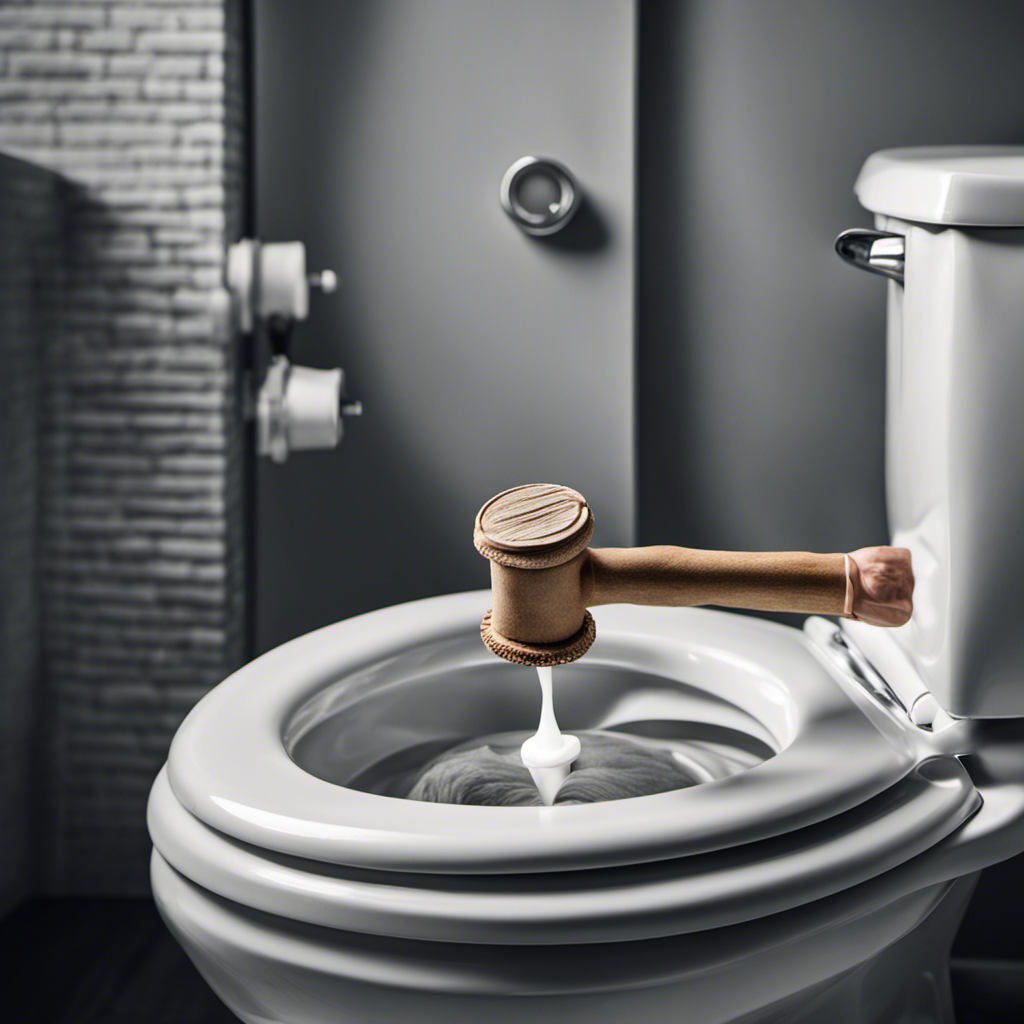As I sit upon my throne, I cannot help but ponder the question: what are toilet seats made of?
This seemingly mundane object, which supports us in our most vulnerable moments, is crafted from a variety of materials.
From common plastics to traditional wood, and even innovative modern materials, the choices are vast.
Join me on this exploration as we delve into the pros and cons of different toilet seat materials, uncovering the secrets behind this essential bathroom fixture.
Key Takeaways
- Plastic is a popular choice for toilet seat manufacturing due to its affordability, versatility, and durability.
- Wood toilet seats offer a natural and aesthetic appeal but require regular maintenance and proper sealing to prevent warping.
- Cushioned vinyl seats provide a softer seating surface and are easy to clean, but may not be as durable as plastic or wood seats.
- Innovative materials like bamboo and carbon fiber are being used to create modern and stylish toilet seats that are also sustainable and strong.
Materials Used in Toilet Seat Manufacturing
Toilet seats are typically made from a variety of materials. These materials include plastic, wood, and cushioned vinyl. The choice of material for toilet seat manufacturing depends on several factors. These factors include cost, durability, and environmental impact.
Plastic is a commonly used material for toilet seats. It is popular because of its affordability and versatility. Plastic can be molded into different shapes and designs, making it suitable for various toilet seat styles.
Wood is another option for toilet seat manufacturing. It is known for its natural and aesthetic appeal. However, wood requires regular maintenance and may be more expensive compared to plastic.
Cushioned vinyl seats provide comfort and are often used in commercial settings. They offer a softer seating surface compared to plastic or wood seats.
When evaluating the environmental impact of toilet seat manufacturing, plastic seats may have a higher carbon footprint. This is due to the production process and disposal challenges associated with plastic.
Now, let’s transition to the next section and explore the common plastics used for toilet seat production.
Common Plastics for Toilet Seat Production
Polypropylene and thermoplastic elastomers are popular materials used in manufacturing toilet seat covers. These materials offer durability, resistance to chemicals, and ease of molding, making them ideal for toilet seat production.
However, with the increasing concern about plastic waste and its impact on the environment, there is a growing demand for alternative materials for eco-friendly toilet seats. Here are two potential solutions:
-
Bio-based plastics: These are derived from renewable sources such as corn, sugarcane, or algae. They offer similar properties to traditional plastics but have a lower carbon footprint and can be biodegradable or compostable.
-
Recycled plastics: By utilizing recycled materials, we can reduce the amount of plastic waste that ends up in landfills or oceans. Various recycling technologies can transform discarded plastics into new toilet seat covers, promoting a circular economy.
Wood as a Traditional Toilet Seat Material
When considering alternative materials for your bathroom, wood can be a traditional and aesthetically pleasing option for your toilet seat. Sustainable alternatives are becoming increasingly popular, and wood is a great choice due to its renewable nature.
Wood toilet seats are known for their durability and can withstand the wear and tear of everyday use. They are also relatively easy to maintain, requiring regular cleaning with mild soap and water. However, it is important to note that wood is susceptible to moisture and may warp if not properly sealed. To ensure longevity, it is recommended to choose a wood toilet seat that has been treated with a waterproof finish.
Overall, wood toilet seats offer a unique and timeless appeal while providing a sustainable and durable alternative to plastic options.
Innovative Materials for Modern Toilet Seats
If you’re looking for a modern and stylish option for your bathroom, there are innovative materials available that can provide both comfort and durability.
When it comes to toilet seats, traditional materials like wood are being replaced by more advanced options. Two such materials that have gained popularity are bamboo and carbon fiber.
Bamboo toilet seats offer a unique blend of elegance and sustainability. Bamboo is a fast-growing grass that can be harvested without causing environmental harm. It is also known for its strength and resistance to moisture, making it an ideal choice for bathroom fixtures.
On the other hand, carbon fiber toilet seats offer unmatched strength and durability. Carbon fiber is a lightweight yet incredibly strong material commonly used in aerospace and automotive industries. Its high strength-to-weight ratio makes it perfect for creating long-lasting toilet seats that can withstand heavy use.
Whether you prefer the natural beauty of bamboo or the modern strength of carbon fiber, these innovative materials are revolutionizing the world of toilet seats.
Pros and Cons of Different Toilet Seat Materials
When considering different materials for your toilet seat, it’s important to weigh the pros and cons of each option.
One popular feature in modern toilet seats is the ability to heat the seat, providing added comfort during use. Heated toilet seats offer benefits such as improved blood circulation and reduced discomfort during colder seasons.
However, it’s crucial to also consider the environmental impact of the materials used in toilet seat construction. Traditional materials like wood and plastic can have negative consequences on the environment due to their manufacturing processes and disposal.
Alternatively, eco-friendly materials like bamboo or recycled plastic offer a more sustainable option.
Conclusion
In conclusion, toilet seats are made from a variety of materials. Common plastics like polypropylene and thermoset plastics like urea-formaldehyde are commonly used. Wood has also been a traditional material for toilet seats, offering a classic and natural aesthetic. Modern toilet seats are now being made from innovative materials such as bamboo, which is both eco-friendly and durable.
Each material has its own advantages and disadvantages. When choosing a toilet seat, it is important to consider factors like comfort, hygiene, and sustainability. For example, a case study conducted by a leading toilet seat manufacturer found that their bamboo toilet seats had a longer lifespan and were more resistant to cracking compared to plastic ones.









